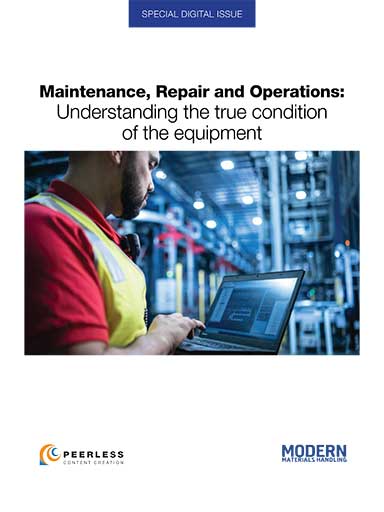Maintaining robotic lift trucks
Sensors must be kept clean, but safe and steady autonomous operation should minimize unplanned repairs.
Fully autonomous lift trucks aren’t in that many DCs just yet, but they are seen as a high-growth solution given issues like labor shortages and escalating fulfillment pressures. It’s estimated by research firm Interact Analysis that approximately 10,800 robotic lift trucks shipped globally in 2021, or about 0.6% of the total lift truck market.
Still, the day may come when tens of thousands of autonomous lift trucks are being deployed each year. At that point, what about their maintenance? Is it different?
Not substantially, it turns out, at least with most mechanical aspects that these trucks have in common with their manually operated equivalents, like forks, hydraulics, batteries and wheels. Pre-shift safety routine and inspection are still needed, but one person can be assigned to do the check for a small group of units, says Jeff Christensen, vice president of product for Seegrid, which provides autonomous mobile robot (AMR)-based autonomous lift trucks.
If a sensor does get obstructed or needs cleaning, it’s easy for that person to learn how to do that. For something like wheel service, the process is typically handled by the same technicians who perform such service on conventional lift trucks.
“If you think of an autonomous lift truck as still being a lift truck, but with full autonomous navigation, there are going to be some maintenance similarities, but the use patterns are going to be very different, because they are going to operate in a very safe and consistent manner,” says Christensen. “So, there are implications for maintenance, in that unplanned, corrective maintenance is almost zero.”
Vendors may offer robotics-as-a-service (RaaS) arrangements for field service. Seegrid’s RaaS program includes field service and wellness checks, but these wellness checks, points out Christensen, are more about the holistic performance of the fleet and possible adjustments to processes, rather than needing to fiddle with the robots themselves. “We are an automation company, but we lean into service because we recognize the value of the people aspects and adoption aspects of a process change when moving from manual operations to an automated solution,” he says.
Jim Gaskell, director of global automation and emerging technologies for Crown Equipment, which offers dual-mode autonomous lift trucks, agrees that autonomous operation often avoids the wear-and-tear issues common with manually operated lift trucks, and that procedures such as cleaning a sensor are simple to learn for the person who inspects and tends to the automated units. Also, while autonomous lift trucks are networked and can have their software updated centrally, users tend to have varied IT security policies on allowing that, so part of deploying automated models is establishing the preferred, secure software update process.
“The maintenance agreement can cover maintenance of the vehicle, as well as how they want the software to be updated and maintained,” Gaskell says. “These are networked assets just like a laptop on a corporate network, so their use brings in those IT security considerations.”













